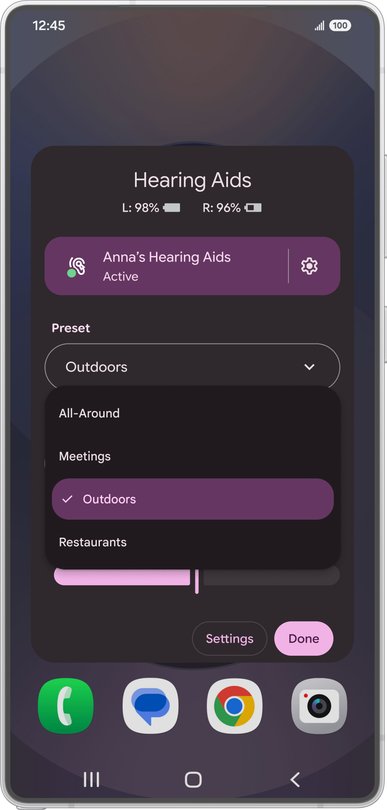In a significant move to enhance accessibility for users with hearing impairments and those who are blind or have low vision, Google has announced impactful updates to Android’s features. These changes are particularly relevant for small business owners who rely on technology to connect with a diverse customer base and provide inclusive services.
With the introduction of the Samsung Galaxy S25, Google is employing next-generation Bluetooth technology, specifically the LE Audio system, to bolster the functionality of popular hearing aids from GN Hearing and Oticon. This integration aims to streamline hearing aid management, offering features such as hands-free calling and the ability to access and modify presets directly within the device settings. Such enhancements could simplify interactions for those who use hearing aids, making it easier for small businesses to engage with an increasingly interconnected consumer demographic.
“By embracing LE Audio technology, we are enabling users to experience seamless audio streaming and management from their smartphones,” said a Google spokesperson. This shift not only provides individuals with better control over their hearing aids but may also present opportunities for small business owners to explore new avenues for customer service and experience, directly appealing to a market that values accessibility.
The roll-out will first occur on the Galaxy S25 and will progressively extend to the Pixel 9 and Galaxy S24 devices. For business owners considering integrating these technologies, the potential implications are noteworthy. Businesses that adopt these advanced accessibility tools may enhance customer satisfaction by ensuring that individuals with hearing impairments can access information and assistance easily during their visits, whether in-store or via phone calls.
The update also introduces vital improvements to Android’s TalkBack screenreader. Beginning with the Galaxy S25, TalkBack will allow braille users to connect their devices via HID, enhancing the accessibility of smartphones and tablets. Over the next few months, this feature will expand to all devices operating on Android 15. In tandem, TalkBack will provide enriched image descriptions, further supporting those who may struggle with visual content.
For small businesses, these updates spotlight the importance of visual and auditory accessibility. By embracing tools that cater to individuals with disabilities, businesses can enhance their customer engagement strategies, ultimately making their services more appealing to a broader audience. Increased accessibility not only promotes inclusivity but can also foster brand loyalty among customers who appreciate businesses that prioritize their needs.
However, small business owners must consider potential challenges associated with these advancements. The integration of new technologies necessitates appropriate training for staff to ensure they can effectively assist customers utilizing these features. Additionally, businesses may need to invest in updated systems or equipment to fully leverage the benefits of LE Audio and TalkBack, which could strain budgets, particularly for smaller enterprises.
Moreover, as more businesses incorporate these technologies, establishing a competitive edge may hinge on staying ahead of tech trends. Small business owners should remain proactive about ongoing developments in accessibility software and hardware to ensure they meet the evolving needs of their customers.
The advancements rolled out by Google underscore a growing commitment to inclusivity in technology. For small business owners, this is not only an opportunity to better serve customers but also to enhance brand reputation and foster loyalty within the community. Adopting and championing these technologies can position businesses as leaders in accessibility, setting a standard for inclusiveness in increasingly digital marketplaces.
For more detailed information about these updates, visit the original announcement at Google’s blog: Google Blog.
Image Via Android



